Primiera Bolognese
Primiera Bolognese by Modiano, c.1975
Primiera Bolognese was a gambling game played in Italy from the first half of the 16th century and this pattern derives from that period or even earlier. As it is now produced as a double-ended deck, some archaic features have been chopped off. Originally it had maids instead of jacks in cups and coins (a feature shared in Florentine Minchiate) and it also shares court card designs with Tarocco di Bologna. The dragon head on the ace of swords can still be seen. See the Box►
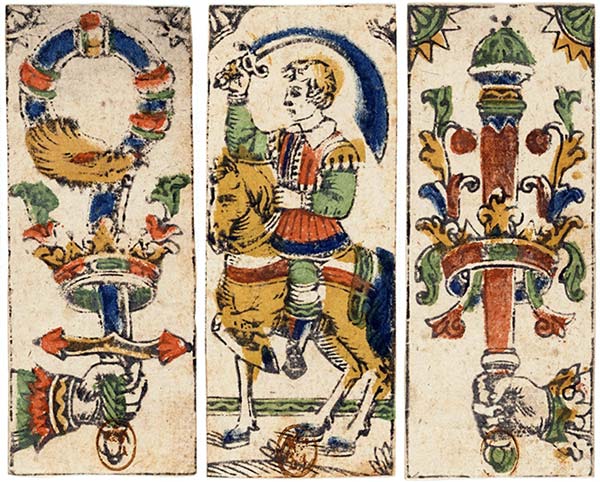
Above: early 17th century Tarocchino cards showing archaic features Bibliothèque Nationale de France►

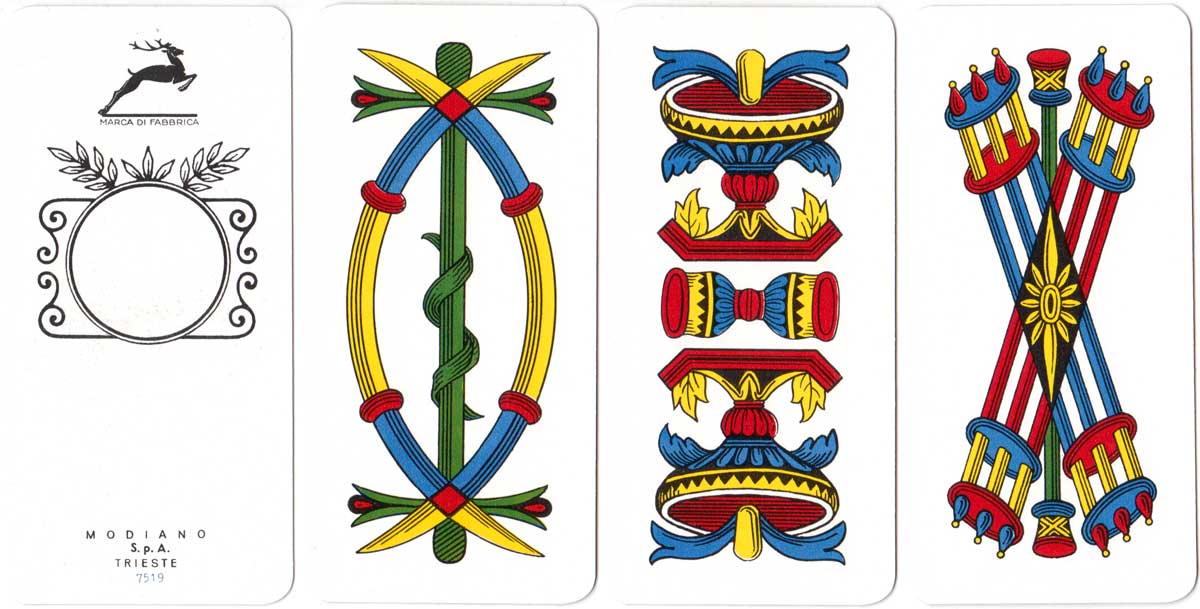
Above: Primiera Bolognese by Modiano, c.1975. The Primiera deck has 40 cards: Ace to 7, Knave, Knight, and King. The numeral cards have interlaced swords and staves. The object of the game is to attain the highest possible hand. The player who holds the prime, a sequence of the best cards and a good trump, is sure to be successful over the adversaries – hence the game’s name. Images courtesy Rex Pitts.
REFERENCES
https://en.wikipedia.org/wiki/Primero►
Mann, Sylvia: All Cards on the Table, Jonas Verlag/Deutsches Spielkarten-Museum, Leinfelden-Echterdingen, 1990
By Rex Pitts (1940-2021)
United Kingdom • Member since January 30, 2009
Rex's main interest was in card games, because, he said, they were cheap and easy to get hold of in his early days of collecting. He is well known for his extensive knowledge of Pepys games and his book is on the bookshelves of many.
His other interest was non-standard playing cards. He also had collections of sheet music, music CDs, models of London buses, London Transport timetables and maps and other objects that intrigued him.
Rex had a chequered career at school. He was expelled twice, on one occasion for smoking! Despite this he trained as a radio engineer and worked for the BBC in the World Service.
Later he moved into sales and worked for a firm that made all kinds of packaging, a job he enjoyed until his retirement. He became an expert on boxes and would always investigate those that held his cards. He could always recognize a box made for Pepys, which were the same as those of Alf Cooke’s Universal Playing Card Company, who printed the card games. This interest changed into an ability to make and mend boxes, which he did with great dexterity. He loved this kind of handicraft work.
His dexterity of hand and eye soon led to his making card games of his own design. He spent hours and hours carefully cutting them out and colouring them by hand.

Leave a Reply
Your Name
Just nowRelated Articles

Dal Negro Bridge set
Dal Negro Bridge set featuring old Vienna pattern courts.

Carte Romane
“Carte Romane” designed by Giorgio Pessione, 1973, celebrating the history of Rome.
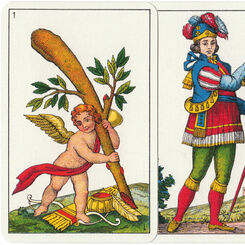
Sarde Pattern
Sarde pattern published by Modiano, c.1975, based on early XIX century Spanish model.
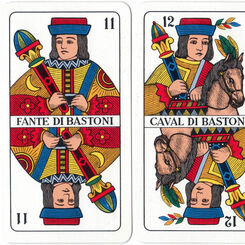
Triestine Pattern
The Triestine pattern is derived from the Venetian (Trevisane) pattern but with its own characterist...

Trentine Pattern
Trentine Pattern

Bergamasche Pattern
Bergamasche Pattern by Modiano, 1970s.

Hermanos Solesio
“Money Bag” pattern by Hermanos Solesi, late 18th c.
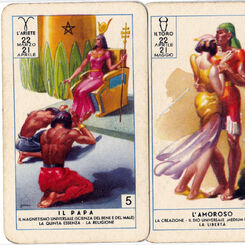
Il Destino Svelato Dal Tarocco
The Cagliostro Tarot was first published in 1912 as “Il Destino Svelato Dal Tarocco”.

Genovesi Pattern
Genoese pattern from Italy.
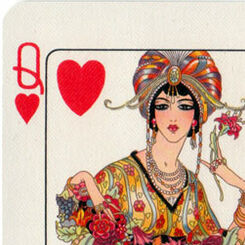
World Bridge
‘World Bridge’ produced by Modiano in Trieste, Italy, since around 1950.

Club Bridge
Modiano’s ‘Club Bridge’ is a new edition of a stylish deck originally published in c.1895.

Modiano Patience
Patience cards published by Modiano, c.1945.

Piacentine Pattern
Piacentine Pattern, several double-ended versions.
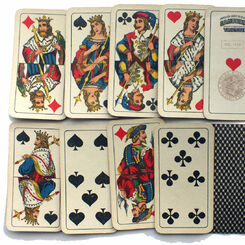
Lombardy (or Milanesi) pattern
The origins of the Lombardy pattern probably lie in the early 19th century when it was a full-length...

Trevisane pattern
The double-ended version of the ‘Trevisane’ pattern originated in the early 19th century.

Tarocco Bolognese
Tarocco Bolognese

Brescia pattern
The Brescia pattern contains elements which come from a past age.

Sicilian Pattern
The Sicilian pack has a similar composition to the Neapolitan pack, and is small and squat in appear...
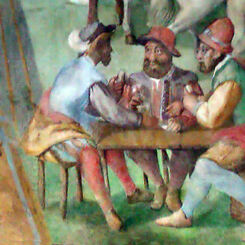
Italian Playing Cards
The first reliable evidence that playing cards were being used in Italy is from 1376, when a game ca...

Neapolitan Pattern
Cartine da Gioco Vesuvio miniature Neapolitan pattern.
Most Popular
Our top articles from the past 60 days


 Your comment here. Your comment here. Your comment here. Your comment here. Your comment here. Your comment here. Your comment here. Your comment here. Your comment here. Your comment here. Your comment here. Your comment here. Your comment here. Your comment here. Your comment here. Your comment here. Your comment here. Your comment here. Your comment here. Your comment here. Your comment here. Your comment here. Your comment here. Your comment here. Your comment here. Your comment here. Your comment here. Your comment here. Your comment here. Your comment here. Your comment here. Your comment here.
Your comment here. Your comment here. Your comment here. Your comment here. Your comment here. Your comment here. Your comment here. Your comment here. Your comment here. Your comment here. Your comment here. Your comment here. Your comment here. Your comment here. Your comment here. Your comment here. Your comment here. Your comment here. Your comment here. Your comment here. Your comment here. Your comment here. Your comment here. Your comment here. Your comment here. Your comment here. Your comment here. Your comment here. Your comment here. Your comment here. Your comment here. Your comment here.




















